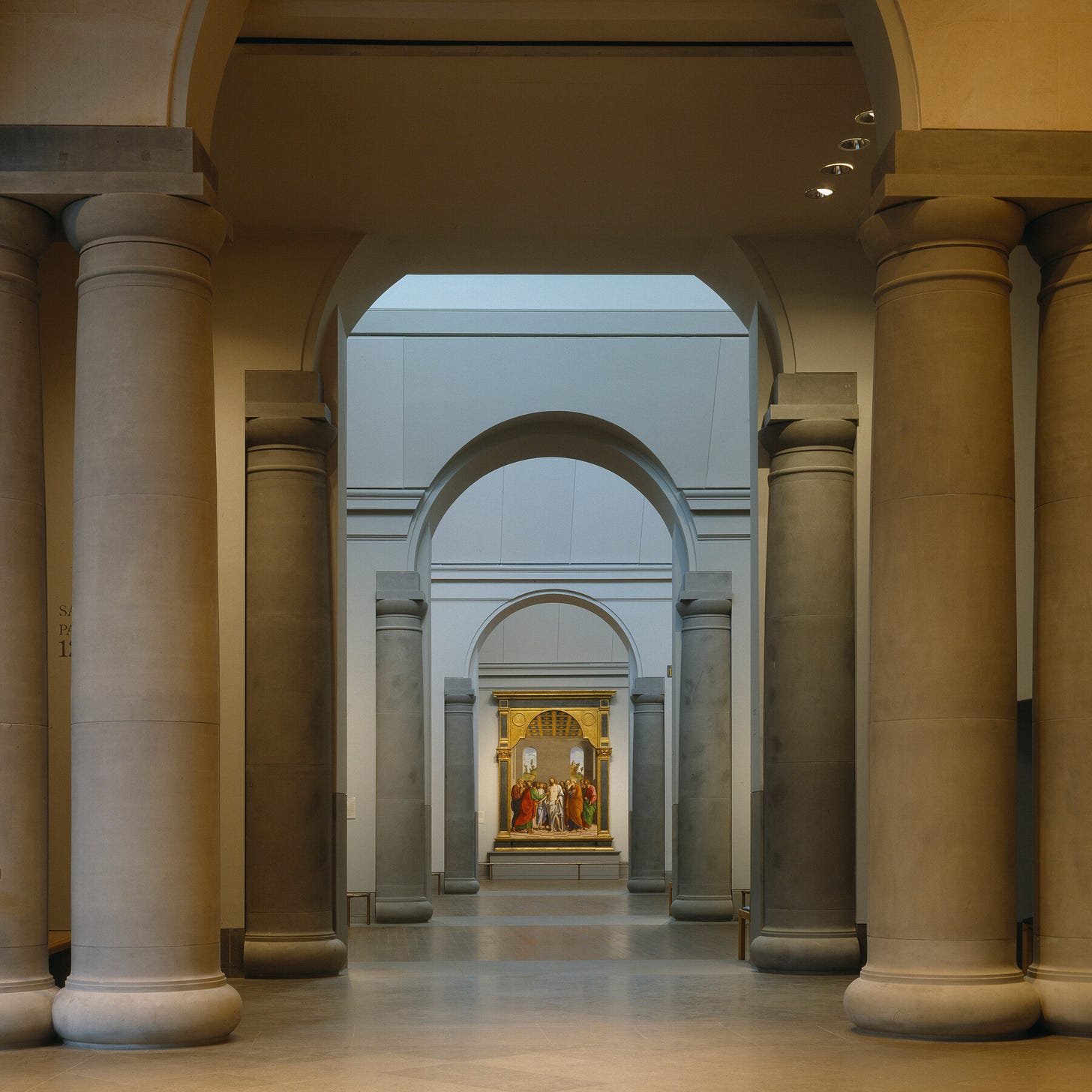Columns
The only columns I’ve been paying much attention to lately have been in spreadsheets. Joke’s on me–I’m getting laid off at the end of July!
Over the course of my circuitous “career,” I’ve raised a lot of money for many different art organizations. Which is why this story tickled me so much when I read it last summer. Back in the 1990s, Robert Venturi and Denise Scott Brown designed the Sainsbury Wing of the National Gallery in London, a project bankrolled by three brothers from the Sainsbury’s grocery dynasty. One of them, John Sainsbury, was not a fan of the massive false columns the architects insisted on installing in the foyer.
John died in 2022. About a year later, during a long renovation, workers removing the columns discovered a letter he’d managed to squirrel inside one of them, which read:
IF YOU HAVE FOUND THIS NOTE YOU MUST BE ENGAGED IN DEMOLISHING ONE OF THE FALSE COLUMNS THAT HAVE BEEN PLACED IN THE FOYER OF THE SAINSBURY WING…LET IT BE KNOWN THAT ONE OF THE DONORS OF THIS BUILDING IS ABSOLUTELY DELIGHTED THAT YOUR GENERATION HAS DECIDED TO DISPENSE WITH THE UNNECESSARY COLUMNS.
The shade! On one hand, you have to give Johnny some credit for acquiescing to the architects during his lifetime. I can assure you many members of the donor class do not possess the same grace. But he clearly couldn’t let it go. Even in the UK, global capital of passive aggression, this is next level pettiness, truly exquisite trolling from beyond the grave. If you were wondering, I looked it up: Lord Sainsbury was a Scorpio.
Around the same time Venturi and Scott Brown were bending John Sainsbury to their postmodernist will, they were also designing this delightful set of flatware. For some reason, I find it deeply satisfying that all the spoons have Doric capitals on the handles, all the forks Corinthian, and all the knives Ionic. Just feels right.

For the radical Italian artists who founded Studio 65, classical Western architecture represented traditions that, in the social turmoil of the 1960s and ‘70s, seemed ripe for subversion. In 1971, they produced the Capitello, toppling an Ionic column into a lounge chair, cast not in marble but in squishy polyurethane.
I’d never heard of this chair until 2023, when a certain publisher released a special-edition book about Arnold Schwarzenegger, which is displayed on a 1:2 scale reproduction of the Capitello. I’ve sold quite a few copies of this book, but I still don’t have the foggiest idea what this iconic Italian design has to do with the Governator.

After a grueling week in LA promoting that Arnold book, I went to see Andrea Ferrero’s installation at Swivel Gallery’s old space in Brooklyn. Like the Studio 65 crew, Ferrero is playing a subversive material game. Her ruined columns, which at first look like pink-veined marble, are actually white chocolate. For Ferrero (who was born in Peru), European-style columns serve as symbols of colonial domination. She flips the script by casting them in cacao and sugar and encouraging visitors to gradually consume them.
Speaking of ruins, I just finished A Distant Mirror, Barbara Tuchman’s history of 14th century Europe, which I can’t recommend highly enough. Obviously, this preceded the colonial era that preoccupies Ferrero (Charles VI never got to try chocolate), but it’s a hugely entertaining and menacingly relevant story of plague, war, and a capricious 1% overseeing the corruption of society at every level. Sound familiar?
This year, my birthday falls on the same day as the Drag March in NYC. I don’t know what I’m going to wear yet, but wouldn’t it be a fucking serve to show up in the Palladio dress Gianfranco Ferré designed for Dior?




